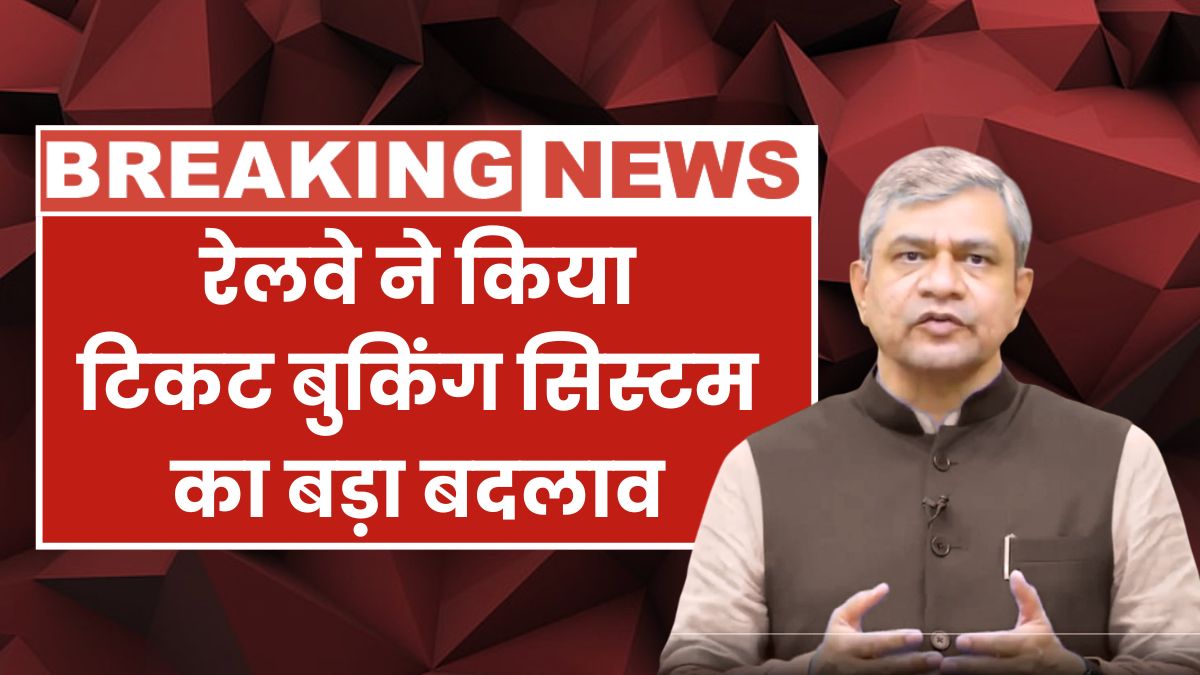If you’ve been a regular train traveler in India, you probably know the drill. During peak seasons, weekends, or festivals, confirmed tickets are like gold dust. And in such times, waiting tickets were our only hope. Even if your ticket wasn’t confirmed, at least you had a chance of getting on the train—and sometimes even getting a seat later.
But not anymore.
From June 25, 2025, Indian Railways has implemented a major change in its ticketing system that is already making travel harder for the common man. Under this new system, the number of waiting list tickets has been drastically cut down. Now, only 25% of the total seats in a train will be allowed to be booked as waiting tickets. So, if a train has 300 seats, only 75 waiting tickets can be issued. After that, the system will directly show a “No Room” or “Regret” message—basically telling you, no ticket for you.
How CRIS Changed the Game: The Technical Backbone of Indian Railways
This change hasn’t come randomly. It is part of a new policy under the Centre for Railway Information Systems (CRIS)—the tech platform that handles railway reservations across India. Since June 15, CRIS has started applying stricter rules on how many tickets can be issued per train.
According to the railway board, this move is aimed at increasing transparency and reducing unnecessary crowding in trains. It also helps in curbing illegal ticket agents and touts who used to take advantage of loose waiting list norms. But for lakhs of daily passengers, the situation has flipped from hopeful to helpless.
The Double-Edged Sword: What Railway Claims vs. Ground Reality
On paper, this decision may sound good. The idea is that with fewer waiting tickets, there will be more chances for real travelers to get confirmed seats, which should, in theory, reduce the chaos. Railway authorities believe that only serious, genuine travelers will book tickets now, as casual bookings and speculative reservations (often done by agents) will reduce.
But here’s the ground reality: Most travelers are not even able to get a waiting ticket now. And that’s where the real problem begins.
With the system denying waiting tickets quickly, many passengers are turning to general coaches, which are already jam-packed. In some cases, passengers are boarding sleeper or AC coaches without valid tickets and paying penalties on the spot. This is not only creating chaos inside coaches but also leading to arguments between TTEs and passengers.
Real Example: Gorakhdham Express and Saptkranti—No Room Even in First Class
Take the Gorakhdham Express as an example. This train, which runs from Gorakhpur, is witnessing a serious crunch. In the AC First Class, which usually has 6 berths, now only 4 waiting tickets are allowed. Imagine how tight things have become when even the most premium class has such tight booking windows.
And it’s not just this train. Major routes like the Saptkranti Express are fully booked till mid-July, and most ticket booking statuses are now showing “No Room” across all classes. So, unless you book your ticket weeks in advance, even a remote chance of travel is fading away.
Old Rules vs. New Rules: What Changed Exactly?
In the earlier system, things were a lot more flexible. For example, if a train had 300 seats, it wasn’t uncommon for up to 200 waiting tickets to be issued—especially during peak times. Many passengers knew that even a waiting ticket gave them a fighting chance. They would board the train, and in many cases, their tickets would get confirmed by the time the train departed.
But now, with this strict 25% waiting ticket limit, once that quota is full, the system simply shuts the gate. Even if someone cancels later and a seat opens up, no new waiting tickets will be issued.
That’s what’s worrying people the most—it’s not just tougher to get a seat, it’s now harder to even try.
What It Means for Passengers: More Hassles, Fewer Options
The sad reality is that many travelers—especially those from rural areas, small towns, or those who travel due to emergencies—are getting hit the hardest. For them, booking tickets at the last minute was often the only option. With these new rules, they are left with no choice but to either skip the journey or take risky steps like travelling without a valid ticket.
And that’s not just inconvenient, it’s illegal. Getting caught without a valid ticket can result in heavy fines or even legal action, especially on long routes. For families or elderly passengers, this new system is nothing less than a nightmare.
Why Railways Says This Is a Good Thing
Indian Railways has defended this move, stating that it increases transparency and helps reduce the misuse of the system by middlemen and ticket agents. With fewer waiting list entries, passengers will know upfront whether they are likely to travel or not—no false hopes, no last-minute scrambling.
Officials also say that if the system performs well and passengers respond positively, the rules might be relaxed later to allow more flexibility. But as of now, there is no such assurance.
Overview Table: Old Ticketing vs New Rules from June 2025
| Aspect | Earlier System | New System (From June 25, 2025) |
|---|---|---|
| Waiting Ticket Limit | Often 100–200 per train, beyond seat capacity | Max 25% of seat capacity (e.g., 75 for 300 seats) |
| After Limit Reached | System still allowed booking in waiting | System shows “No Room” or “Regret” immediately |
| Booking Flexibility | High, tickets available closer to travel date | Low, tickets vanish early |
| Impact on General Coaches | Less crowd, more organized boarding | Overcrowded, unsafe, and chaotic |
| Confirm Chance for Waiting | Moderate to High depending on cancellations | Almost Nil once 25% quota is gone |
FAQs: Your Questions on the New Railway Rules
Q: Why has Indian Railways made this change?
The main goal is to stop misuse by agents and improve booking clarity for real passengers. It’s meant to bring transparency to the system.
Q: Can I still get a waiting ticket closer to travel date?
Only if the 25% waiting quota isn’t full. Once it’s full, the system will not allow any more bookings.
Q: What happens if someone cancels? Will a new ticket open?
No new waiting tickets are issued after the 25% limit is reached, even if cancellations happen.
Q: Can I travel without a ticket in an emergency?
Traveling without a ticket is illegal and can result in a fine or legal action. Try to get a general ticket or check tatkal quotas instead.
Q: Will this rule be rolled back?
Railways has said the rule might be revised later if the system stabilizes, but as of now, it’s permanent.
Final Thoughts: Tough Times for Train Travelers
This new rule by Indian Railways might make sense from a systems perspective—but for the average Indian traveler, it feels like a big blow. Whether you’re heading home for a festival, rushing for a job interview, or just making a last-minute visit to family—the freedom to travel on short notice has been greatly reduced.
Unless you plan well in advance, or you’re lucky enough to grab one of the few waiting slots, chances are—you’ll be stuck at “No Room.”
read more: Now students will get scholarship of Rs 75,000 directly, Apply now NSP Scholarship 2025












